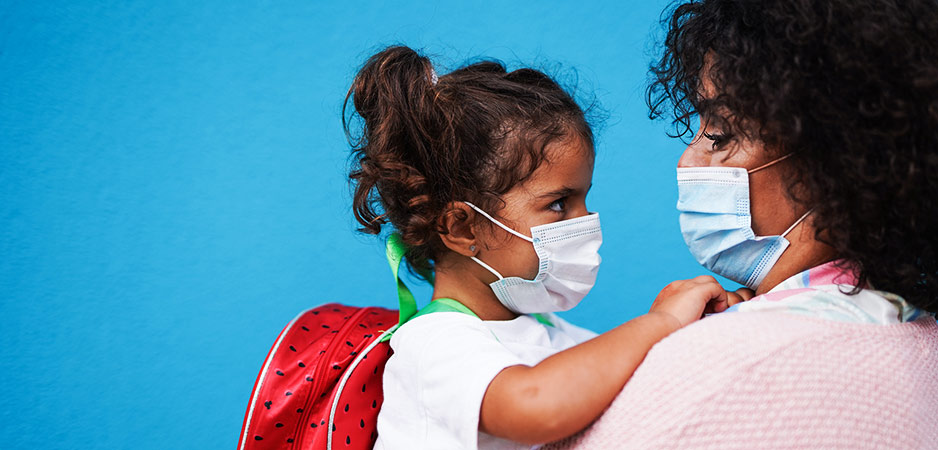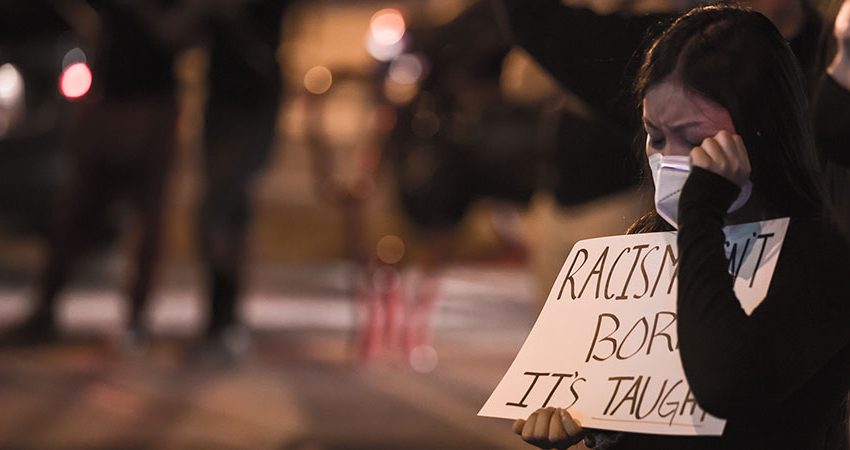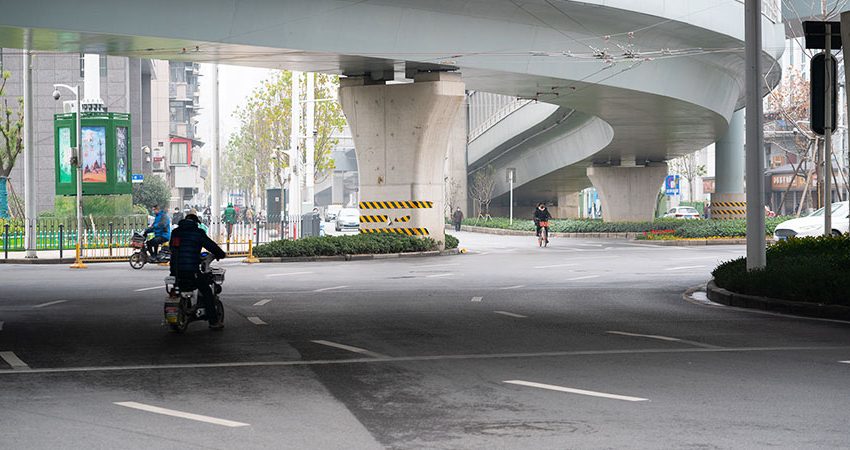With an estimated 255 million full-time jobs lost in 2020, the global economy shrank by 4.4%, pushing ever more people into poverty. Right now, 34 million are on the brink of starvation, and 235 million will require humanitarian assistance and protection in 2021 — an increase of 40% from last year. Limited social and economic mobility has deeply altered family life with alarming speed and magnitude. For families, the fundamental building blocks of our society, the pandemic is a public and yet a very personal crisis. As the raging socioeconomic inequalities we have allowed to multiply are exposed, their severe strain continues to be experienced differently among families.
Women Become Collateral Damage in COVID-19 Pandemic
COVID-19 has exacerbated many of the injustices that face vulnerable families, women and children in every country, but especially in those nations undergoing political and economic turmoil, from inadequate internet access to housing instability, tacit unschooling and food insecurity. Dr. Hans Henri P. Kluge, the World Health Organization’s regional director for Europe, recently noted that “the cards have been stacked against them in terms of jobs, housing, community, social support and health care.” In turn, new and different types of inequality, such as the mental health and wellbeing gap or digital and gender inequalities, are exacerbated. Each is a threat to the human dimension of the UN Sustainable Development Goals (SDGs).
Facing the Crisis
There is empirical evidence that families, women and children are experiencing mental health stress in the face of the unfolding crisis. The cross-sectional COVID-19 Family Life Study initiated at the College of Public Policy, Hamad Bin Khalifa University, carried out online surveys among 123,845 parents of children under 18 spanning every continent between March and October 2020. The results show the worrying incidence of parents’ and children’s mental health, wellbeing, behavioral and emotional difficulties.
During the pandemic, anxiety was the most pervasive symptom among parents, followed by depression, then stress. The prevalence differed significantly according to gender, education and employment status. Symptoms of depression, anxiety and stress were found in mothers, parents with primary and intermediate educational levels, as well as retired and unemployed parents.
Parents reported elevated levels of anxiety in their children across high-income, upper-middle-income and lower-middle-income countries, as defined by the World Bank. In countries facing political instability or conflict, such as Yemen, Syria, Lebanon, Libya, Venezuela, Iraq and Syria, however, the pandemic has had a severe impact on children’s levels of anxiety. Palestine had the highest percentage of children experiencing elevated and severe levels of anxiety compared to countries with high incomes such as Greece, Norway, Poland, Italy and Australia, which had the lowest.
In Asia, children in early adolescence living in single-parent households experienced higher levels of anxiety. In the Gulf region, over 30% of parents reported their children experiencing an elevated level of anxiety and over 20% reported severe difficulties in their child’s emotional, behavioral and attentional abilities. The study also shows that teens are struggling under the oppressive weight of anxiety and depression, many of whom live in low and middle-income countries.
Children’s activity, eating and sleep routines have been disrupted globally, which may have detrimental effects on their health and overall development. More than half of parents surveyed in the UAE, Lebanon, Indonesia, the United States, the Netherlands, China, Pakistan, Singapore, the Philippines, South Africa, Sudan and Peru reported an increase in their children’s sleep problems. Over 50% of parents in Qatar, Bahrain, Italy, the US, Oman, Kuwait, Germany, China, Chile, Venezuela, Malaysia, Nigeria, India and Iraq reported an increase in their children’s reading difficulties. In Saudi Arabia, Qatar, Sweden, Oman, the UAE, Singapore, France, the US, Norway, Brazil, Jordan, Nigeria, Tunisia, Kenya, Algeria, Angola, Ecuador and Chile, more than half reported an increase in their screen time.
The results reflect humanitarian crises that predate the pandemic. Many already vulnerable refugees have been plunged into even greater precariousness, for example. The data shows an increasing inequality between countries, with children in high-income countries experiencing fewer mental health problems than those in the global south. While the challenges of the pandemic are overwhelming for all of us, the more pronounced psychological symptoms among children and teenagers may also be a reflection of the inequities inside their homes and in some cases the utter lack of protection offered by national systems. It is also in these countries where mental health counseling is too often unavailable for those who need it most.
The disruptions to children’s physical activities, sleeping and eating routines, reading and screen time will have a long-lasting effect on their physical and mental health. These must be addressed if we are to guard children’s wellbeing and prevent the onset of more severe behavioral and emotional problems.
Facing the Future
Parents are facing serious challenges and need support if they are to continue fulfilling their foundational role in providing secure, stable and healthy home environments for their children. The most vulnerable families, those who are plagued by poverty, those mired down by gender inequality, and those living in conflict zones, must receive the support they need and deserve.
These more vulnerable families do not have the personal resources to manage the multi-layered pandemic crisis. Their vulnerabilities are too easily exploited, whether within the labor or the housing market, with the most vulnerable often willing to accept abusive conditions to stave off complete destitution. Negative coping strategies may include behavioral disengagement, self-blame, denial and substance abuse, leading to further social exclusion.
On the International Day of Families, we must be mindful that the global SDGs will be difficult, if not impossible, to fulfill unless strategies to achieve them focus on the family. Our policy choices today will determine how quickly countries can overcome the pandemic’s impact. Otherwise, we risk aggravating the already deep inequalities both within and between countries.
Technology and digital tools can help in many respects, offering mental health support or giving parents access to essential public health information and tips on how to recognize and cope with the symptoms of anxiety in their children and teens. But for that to work, the widening digital gap must be addressed. The challenges ahead include the need to develop global, regional and national intervention programs to offset the effects of the pandemic. Evidence-based policy interventions can do much to ensure a fair global order that recognizes the inherent dignity of all persons and all families.
Far beyond the span of current COVID-19 stimulus packages, there is an urgent need for investment and support by governments to protect families, as evidenced by the study. Over 90% of parents surveyed reported an urgent need for financial support for families and the elderly, work-family balance arrangements, mental health programs for parents, children and adolescents, and parenting and relationship education programs. The pandemic has illuminated positive opportunities for shaping family and childcare policies, and family policies must be the foundation of post-pandemic recovery.



